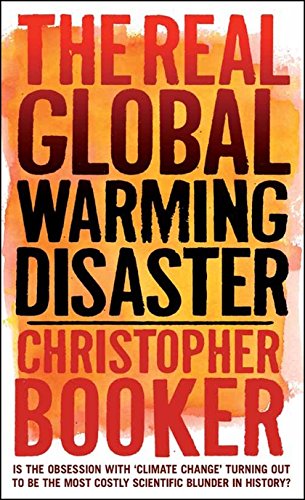Coming to light in recent days has been one of the most extraordinary scientific detective stories of our time, bizarrely centred on a single tree in Siberia dubbed "the most influential tree in the world". On this astonishing tale, it is no exaggeration to say, could hang in considerable part the future shape of our civilisation. Right at the heart of the sound and fury of "Climategate" – the emails leaked from the Climatic Research Unit (CRU) in East Anglia – is one story of scientific chicanery, overlooked by the media, whose implications dwarf all the rest. If all those thousands of emails and other documents were leaked by an angry whistle-blower, as now seems likely, it was this story more than any other that he or she wanted the world to see.
 The Real Global Warmin...
Best Price: $1.58
Buy New $40.99
(as of 02:45 UTC - Details)
The Real Global Warmin...
Best Price: $1.58
Buy New $40.99
(as of 02:45 UTC - Details)
To appreciate its significance, as I observed last week, it is first necessary to understand that the people these incriminating documents relate to are not just any group of scientists. Professor Philip Jones of the CRU, his colleague Dr Keith Briffa, the US computer modeller Dr Michael Mann, of "hockey stick" fame, and several more make up a tightly-knit group who have been right at the centre of the last two reports of the UN’s Intergovernmental Panel on Climate Change (IPCC). On their account, as we shall see at this week’s Copenhagen conference, the world faces by far the largest bill proposed by any group of politicians in history, amounting to many trillions of dollars.
It is therefore vitally important that we should trust the methods by which these men have made their case. The supreme prize that they have been working for so long has been to establish that the world is warmer today than ever before in recorded history. To do this it has been necessary to eliminate a wealth of evidence that the world 1,000 years ago was, for entirely natural reasons, warmer than today (the so-called Medieval Warm Period).
 Heaven and Earth: Glob...
Best Price: $3.29
Buy New $13.98
(as of 10:30 UTC - Details)
Heaven and Earth: Glob...
Best Price: $3.29
Buy New $13.98
(as of 10:30 UTC - Details)
The most celebrated attempt to demonstrate this was the "hockey stick" graph produced by Dr Mann in 1999, which instantly became the chief icon of the IPCC and the global warming lobby all over the world. But in 2003 a Canadian statistician, Steve McIntyre, with his colleague Professor Ross McKitrick, showed how the graph had been fabricated by a computer model that produced "hockey stick" graphs whatever random data were fed into it. A wholly unrepresentative sample of tree rings from bristlecone pines in the western USA had been made to stand as "proxies" to show that there was no Medieval Warm Period, and that late 20th-century temperatures had soared to unprecedented levels.
 Green Hell: How Enviro...
Best Price: $1.25
Buy New $8.10
(as of 05:10 UTC - Details)
Green Hell: How Enviro...
Best Price: $1.25
Buy New $8.10
(as of 05:10 UTC - Details)
Although McIntyre’s exposure of the "hockey stick" was upheld in 2006 by two expert panels commissioned by the US Congress, the small group of scientists at the top of the IPCC brushed this aside by pointing at a hugely influential series of graphs originating from the CRU, from Jones and Briffa. These appeared to confirm the rewriting of climate history in the "hockey stick", by using quite different tree ring data from Siberia. Briffa was put in charge of the key chapter of the IPCC’s fourth report, in 2007, which dismissed all McIntyre’s criticisms.
At the forefront of those who found suspicious the graphs based on tree rings from the Yamal peninsula in Siberia was McIntyre himself, not least because for years the CRU refused to disclose the data used to construct them. This breached a basic rule of scientific procedure. But last summer the Royal Society insisted on the rule being obeyed, and two months ago Briffa accordingly published on his website some of the data McIntyre had been after.
This was startling enough, as McIntyre demonstrated in an explosive series of posts on his Climate Audit blog, because it showed that the CRU studies were based on cherry-picking hundreds of Siberian samples only to leave those that showed the picture that was wanted. Other studies based on similar data had clearly shown the Medieval Warm Period as hotter than today. Indeed only the evidence from one tree, YADO61, seemed to show a "hockey stick" pattern, and it was this, in light of the extraordinary reverence given to the CRU’s studies, which led McIntyre to dub it "the most influential tree in the world".
December 7, 2009





